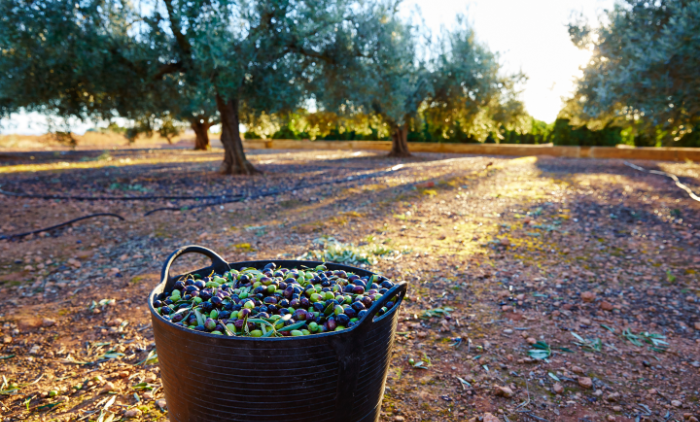
Choosing Single Estate Extra Virgin Olive Oil Over Blended Varieties.
Olive oil has long been a staple in Mediterranean cuisine, known for its flavor and numerous health benefits. When choosing extra virgin olive oils, one critical decision arises – single estate or blended?
In recent years, the trend towards single estate and single origin olive oils has gained momentum, with enthusiasts and culinary experts alike, by showcasing the unique qualities of pure EVOO. This article looks into the reasons why you should consider choosing single estate/origin olive oil over blended alternatives.
Understanding Single Estate Olive Oil
Single estate olive oil is extracted from olives grown on a specific estate or grove, offering a distinct flavor profile and aroma that is unique to that location. Single origin is similar and refers to a group of producers who get their olives from local groves in a specific region.
Blended olive oils combine olives from potentially unknown regions, diluting their unique individual characteristics, quality standards and flavors. On the subject of diluting, many blended olive oils are fake and may contain low-cost base oils that don’t even come from olives. Unfortunately, this type of fraud can be used with low or high-priced olive oils.
- Terroir Influence: The concept of terroir is often associated with wine. It plays a crucial role in the world of single estate olive oils. Terroir refers to the environmental factors, such as soil, climate, and topography, that impart a distinct character to the flavor and health benefits of olives. By choosing single estate olive oil, consumers can savor the nuanced flavors reflective of the terroir where the olives were cultivated.
- Flavor Complexity: Single estate olive oils boast a depth of flavors that are hard to replicate in blended varieties. Each region’s unique climate and soil conditions contribute to the complexity of the oil’s flavor and aroma. Whether it’s the peppery notes of oils from Tuscany or the fruity undertones of those from Andalusia, single estate oils offer a sensory journey that can elevate culinary experiences while maintaining the best health benefits.
- Transparent Quality: Clearly labeled single estate EVOO should provide you with transparency about the oil’s origin. This transparency is often lacking in blended oils, where the mix of olives from various regions can obscure the true quality and origin of the product. Single estate oils allow for a direct connection between the consumer and the olive grove, fostering trust and confidence in the product. Single estate producers proudly boast about their olive oils on their labels and within the content of their websites.
Health Benefits
Beyond the rich flavors and distinctive characteristics, single estate/origin olive oils also present notable health benefits.
- High Antioxidant Content: Olive oil is renowned for its high antioxidant content, which has been linked to various health benefits, including reduced inflammation and improved heart health. Single estate olive oils, with their unadulterated nature, often retain more of these valuable antioxidants compared to blended alternatives.
- Rich in Nutrients: Single estate olive oils are often produced using traditional, artisanal methods that prioritize quality over quantity. This results in oils with higher nutrient levels, including vitamins E and K, as well as beneficial monounsaturated fats. These nutrients contribute to overall well-being and can be a valuable addition to a balanced diet.
Environmental Considerations
Choosing single estate/origin olive oil can also align with environmentally conscious values.
- Sustainable Agriculture: Many producers of single estate olive oil adhere to sustainable and environmentally friendly farming practices. By supporting these producers, consumers contribute to the preservation of ecosystems and biodiversity, promoting a more sustainable approach to olive oil production.
- Reduced Carbon Footprint: Single estate olive oils often involve shorter supply chains, reducing the carbon footprint associated with transportation. This localized approach to olive oil production aligns with the growing demand for eco-friendly and sustainable food options.
I have been researching various brands of blended extra virgin olive oils. I first look for a harvest date, not an expiration date. The harvest date provides a point of origin to calculate the potential shelf life, which is generally less than two years for an unopened bottle.
Some blended oils have expiration date labels that are made to resemble a harvest date label. An expiration date is good to know, however it does not provide you with the most important information – the harvest date. Some single estate oils add a “best by” date for your convenience, but the date of harvest will be nearby.
Look for the word “blended” on the main label. It is usually part of the name or printed separately below it. Some of the most popular brand names at your local grocery store are blended olive oils, however that designation is not always clearly shown on their labels, leading you to believe that the oils are single estate. Pompeian and Kirkland Signature are two good examples of blended olive oils that are difficult to trace. Research the brand before you buy.
Most blended olive oil brands have a code marked on the label and the bottle, usually near the back and bottom of the bottle. The label codes are usually at the end of the small print on the side or back. The corresponding bottle markings are small, very faint and near the bottom of the bottle. The code is where you will find the originating countries of origin. So, put on your reading glasses, get into a bright area and try to decipher that code if you can find it.
It makes me curious and cautious that great effort is taken to keep you from knowing that it’s a blended olive oil. That fact alone should be enough reason to buy a reputable single estate/origin extra virgin olive oil. Even on the websites of some major brands, the fact that it’s a blended oil is not always easy to find, and in some cases, it’s not mentioned at all.
There are some very high-quality blends of extra virgin olive oils. The producers (sometimes chefs) are very transparent about the origins, harvest dates and local regions where the olives are grown. These oils are masterfully crafted to achieve specific flavor profiles for high-end cuisine, where flavor nuances dance together on a specific dish. It’s important to know that high-quality blends are made from combining high-quality extra virgin olive oils with no additional processing.
In the culinary world, where nuances of flavor can elevate a dish from ordinary to extraordinary, the choice between single estate/origin and blended olive oil is not taken lightly. Many high-end restaurants use only single estate extra virgin olive oil from Morocco. The olive groves are located in the aired desert regions causing the trees to be stressed. To combat stress, the trees store and retain more nutrients and polyphenols in their fruit, creating large, superior quality, olives.
Single estate extra virgin olive oil offers a genuine taste of the land from which the olives hail, providing a sensory experience that is far from ordinary. From the diverse flavor profiles to the health benefits and environmental considerations, there are compelling reasons to choose single estate/origin extra virgin olive oil over blends.
Please leave comments, questions or suggestions below.
Tom – Olive Oil Lover

